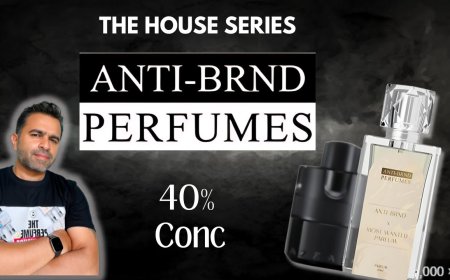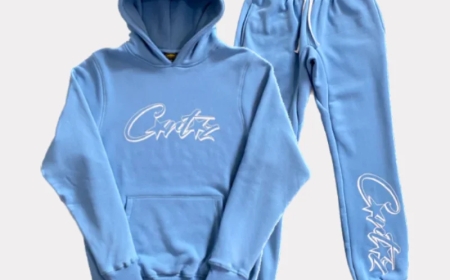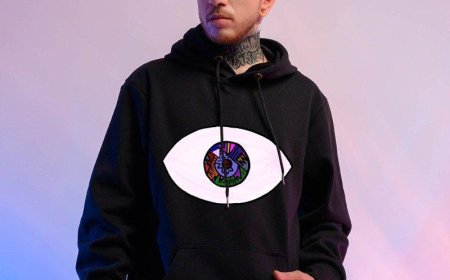Fashion and Politics: When Style Makes a Statement
In todays world, fashion has evolved far beyond fabric and aesthetics. It has become a medium of communicationone that conveys ideologies, signals solidarity, and challenges authority. The relationship between fashion and politics is not new, but it has grown increasingly influential in shaping public opinion and social movements. From the suffragettes' white dresses to modern-day graphic tees, fashion has remained a visual protest and a powerful voice. Whether its a politician's wardrobe or a protestors clothing, style often becomes the loudest statement in the room. One such example of fashion turning into activism is the rise of statement apparel like theFresh Love Hoodie, which combines comfort with a powerful message, symbolizing love, freedom, and expression.
The Historical Interplay Between Fashion and Politics
Historically, fashion has always been a reflection of political climates. In the early 20th century, suffragettes used clothing to defy gender norms. Wearing white, a color symbolizing purity, along with sashes and tailored suits, they declared their seriousness in fighting for the right to vote. Similarly, the Black Panthers in the 1960s used uniformed looksleather jackets, berets, and black sunglassesnot just as a symbol of unity, but also of resistance.
During the French Revolution, political fashion took another turn. The sans-culottes (working-class revolutionaries) rejected the aristocratic knee-breeches in favor of full-length trousers. What one wore became a marker of ones political allegiance. Thus, fashion became a battleground of ideologies.
The Power of the Political Uniform
Uniforms have always been potent in political movements. From military apparel to protest outfits, they function to establish a visual identity. In modern protests, the Black Bloc anarchist tactic involves wearing all black, concealing identities while symbolizing collective power and resistance.
Political leaders, too, use uniforms and wardrobe choices to send subtle or overt messages. Consider Mahatma Gandhis adoption of the khadia hand-spun, simple cotton garmentas a rejection of British colonialism and industrialization. His fashion statement was minimal, yet its political message roared across the globe: self-reliance, simplicity, and defiance.
Politicians and Their Style Messaging
Fashion is often used by politicians to align with specific demographics or to communicate relatability. Barack Obamas rolled-up sleeves signified readiness to work. Angela Merkels rainbow of blazers became her signature, signaling consistency and calm leadership. Meanwhile, Alexandria Ocasio-Cortez uses style intentionallyher bold red lip, statement earrings, and polished attire communicate empowerment and Latina pride.
First Ladies, particularly in the U.S., have long used fashion to reflect political tones. Jacqueline Kennedy was the epitome of elegance and American grace in the 60s. Michelle Obama brought a contemporary, inclusive tone with her support for emerging designers and affordable brands, blending accessibility with style.
Protest Fashion: Dressing to Disrupt
Clothing has frequently become a symbol of protest. In recent years, fashion at protests has carried clear political weightfrom the pink pussyhats at the 2017 Womens March to the I Cant Breathe T-shirts worn in honor of Eric Garner and George Floyd. These visual symbols demand attention and make political positions visible, often amplifying the movement's reach through media coverage and social sharing.
In countries with repressive regimes, even minor fashion choices can serve as acts of defiance. In Iran, women have risked arrest by removing headscarves in public. In Hong Kong, protestors wore black and face masks to stand in solidarity against extradition laws. In each instance, what protestors wore wasnt just about identityit was a calculated risk to make a statement.
Fashion Brands and Political Statements
Fashion brands are no longer staying silent in political matters. Companies like Nike, Levis, and Patagonia have made bold political stances through ad campaigns and products. Whether it's about voting rights, climate change, or racial justice, the fashion industry is taking a stand.
But this alignment comes with scrutiny. Consumers are increasingly aware of performative activism, where brands issue statements without real action behind them. Todays audience demands authenticity: if a brand supports a cause, they must embody those values in their supply chains, leadership, and overall practices.
The Double-Edged Sword of Fashion as Protest
While fashion can be a force for political change, it can also be commodified, losing its original message. For instance, Che Guevaras iconic image has been reproduced on countless T-shirts, often stripped of its revolutionary significance. Similarly, mass-market versions of protest wear may end up benefitting corporations more than the causes they were meant to support.
This dilution presents a challenge: how can fashion remain a powerful form of resistance without being absorbed and neutralized by mainstream commercial culture? The answer lies in context, community, and continued activism beyond clothing.
Digital Activism and Viral Fashion Statements
In the age of social media, fashion statements can go viral in minutes. Hashtag-driven campaigns like #DressLikeAWoman or #BlackLivesMatter gear reach global audiences almost instantly. A single photo of a protest outfit can spark international discussions, making fashion a digital megaphone for movements.
Fashion influencers and celebrities also play a role in spreading political messages through their wardrobes. From Billie Eilishs climate change activism-inspired styles to Harry Styles blurring gender norms, these public figures redefine the boundaries of style and identity.
Gender, Identity, and Political Fashion
One of the most transformative aspects of political fashion is its power to challenge norms, particularly around gender. Fashion has been instrumental in the LGBTQ+ rights movement. The flamboyant drag costumes of Pride parades, gender-neutral clothing lines, and androgynous fashion trends all push society to rethink binary ideas of identity.
Moreover, fashion acts as a tool of affirmation for marginalized communities. Wearing clothes that reflect ones culture, religion, or gender identity is often an act of prideand at times, resistance. For many, simply being visible in their chosen style is a political act.
Fashion Weeks: Runways of Resistance
Even fashion runways have become platforms for political expression. Designers have used Fashion Weeks to spotlight injustice. For instance, Prabal Gurungs models have worn sashes that say Who gets to be American? while Diors We should all be feminists T-shirt became a global sensation.
These statements dont just speak to elite audiencesthey ripple into streetwear, pop culture, and public conversations. They remind us that fashion isnt trivialits tactile ideology. When seen through a political lens, fashion transforms from luxury to language.
Challenges of Being Politically Stylish
However, aligning fashion with politics is not without its criticisms. Theres always a risk of fashion trivializing serious issues. When a protest slogan becomes a seasonal trend, it can undermine the original cause. Brands and individuals must navigate this space responsiblybalancing bold statements with thoughtful action.
Moreover, fashion is still largely shaped by privilege. Not everyone can afford politically-themed designer wear, and many grassroots activists operate far outside the world of high fashion. Bridging this gap is crucial for maintaining the integrity and impact of political style.
Conclusion: Wearing Your Beliefs
Fashion will always be more than fabric. Its a tool, a weapon, a canvas. From the steps of parliament to the streets of protest, from Instagram feeds to magazine coverswhat we wear continues to shape the world we live in.
The next time you slip on a hoodie, a scarf, or a slogan tee, consider what it represents. Is it just style, or is it your story? Whether bold or subtle, deliberate or instinctive, fashion can be a statement that speaks louder than words.
In this way, the future of fashion is politicaland the politics of fashion, unstoppable.





























